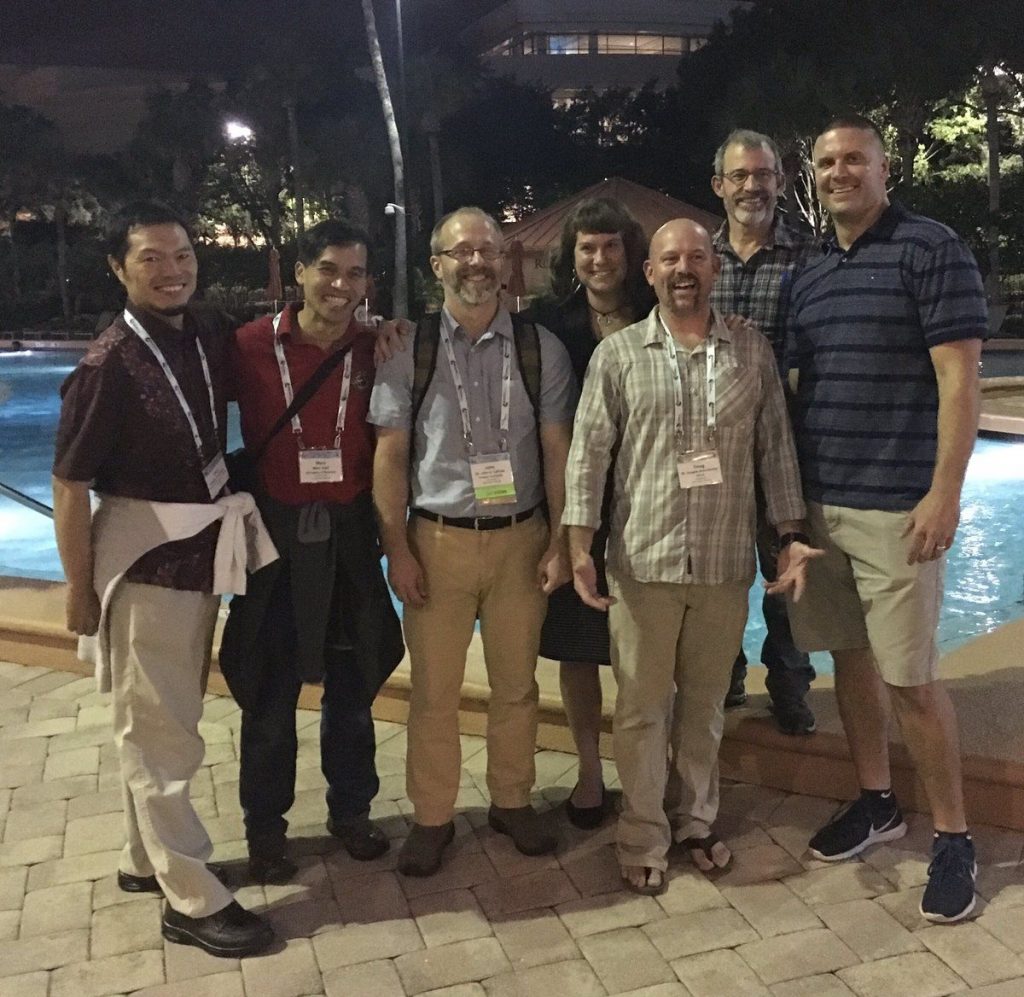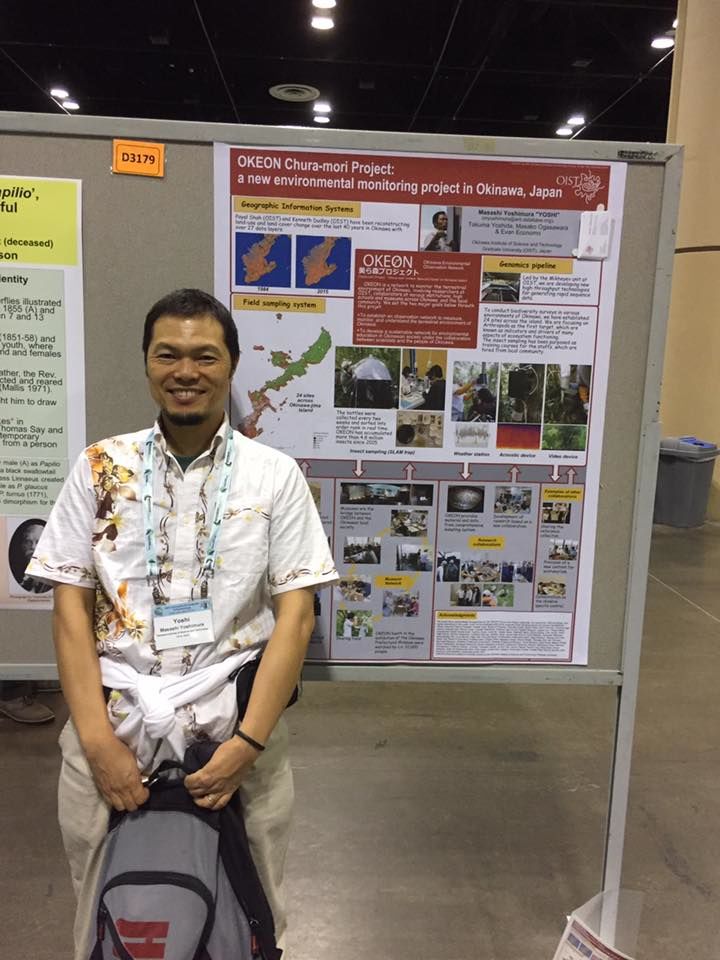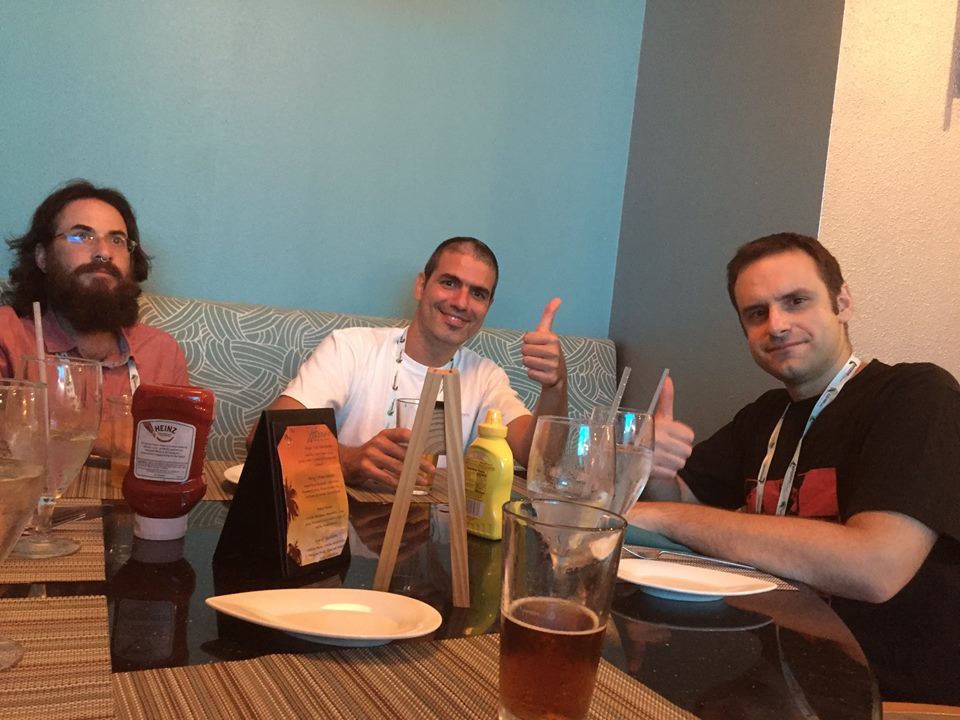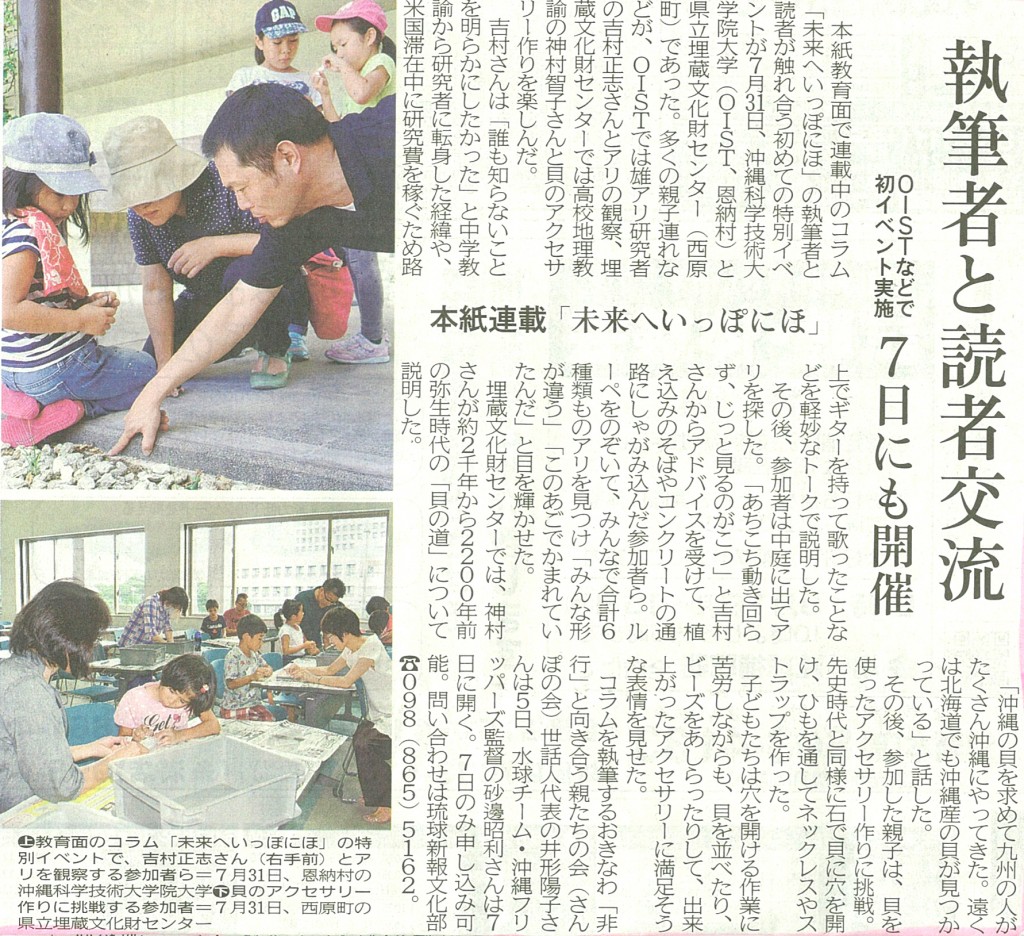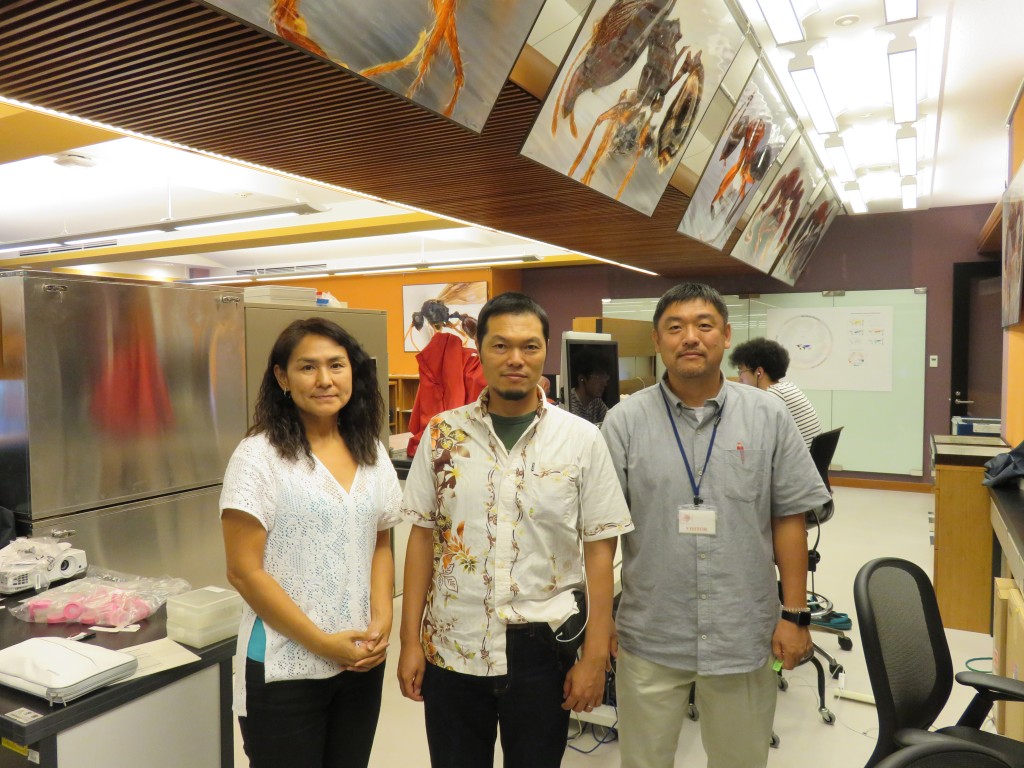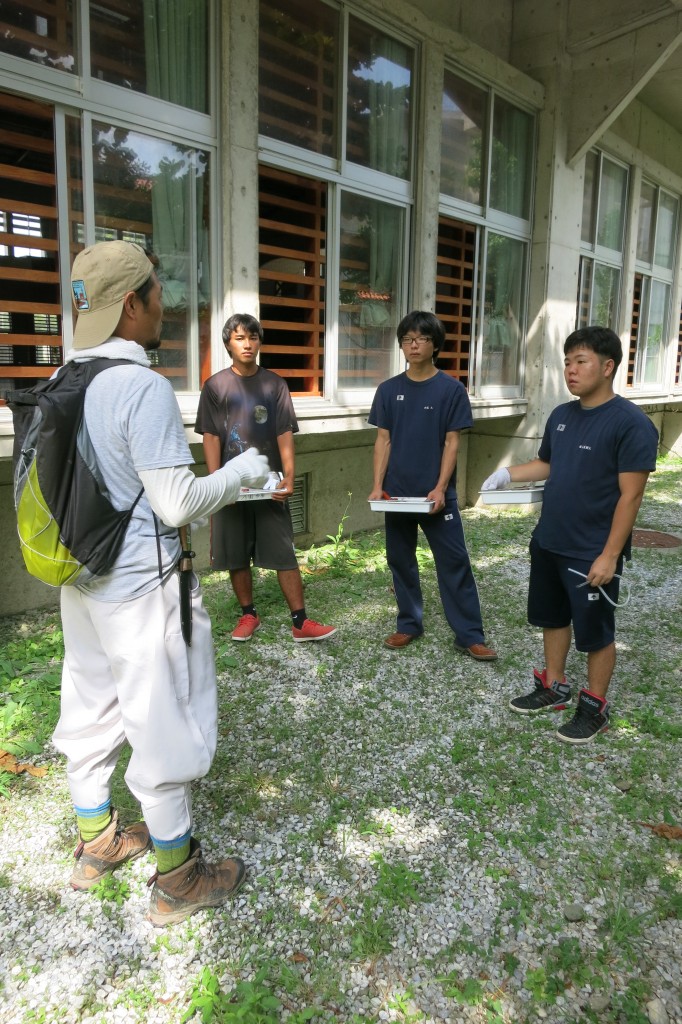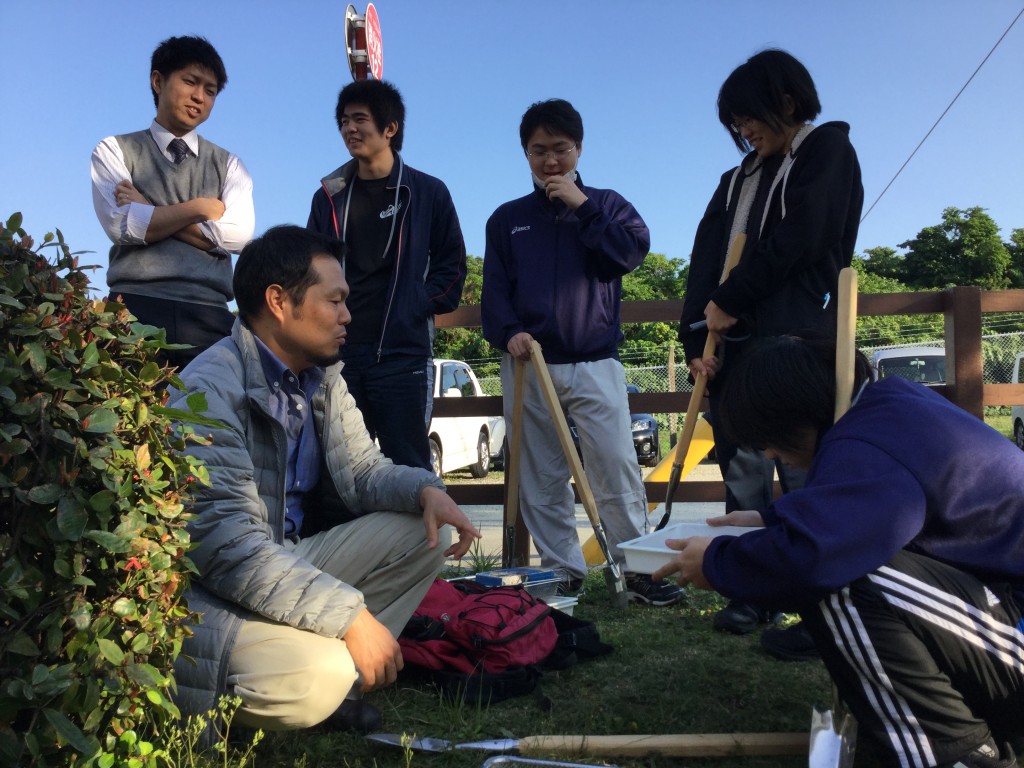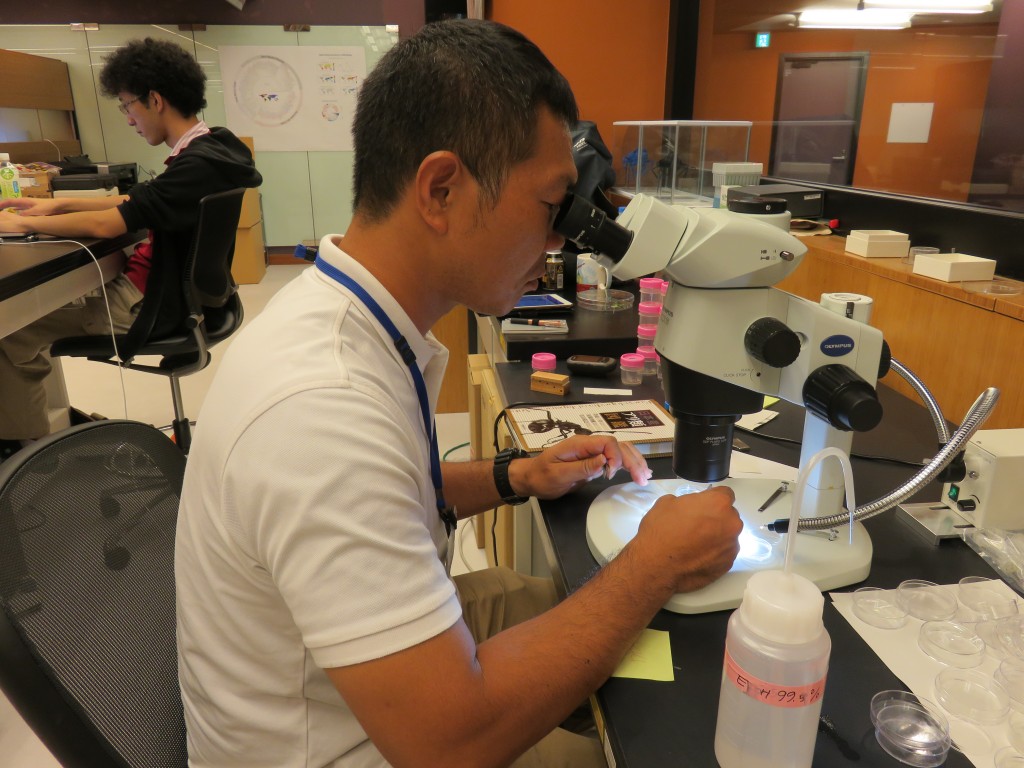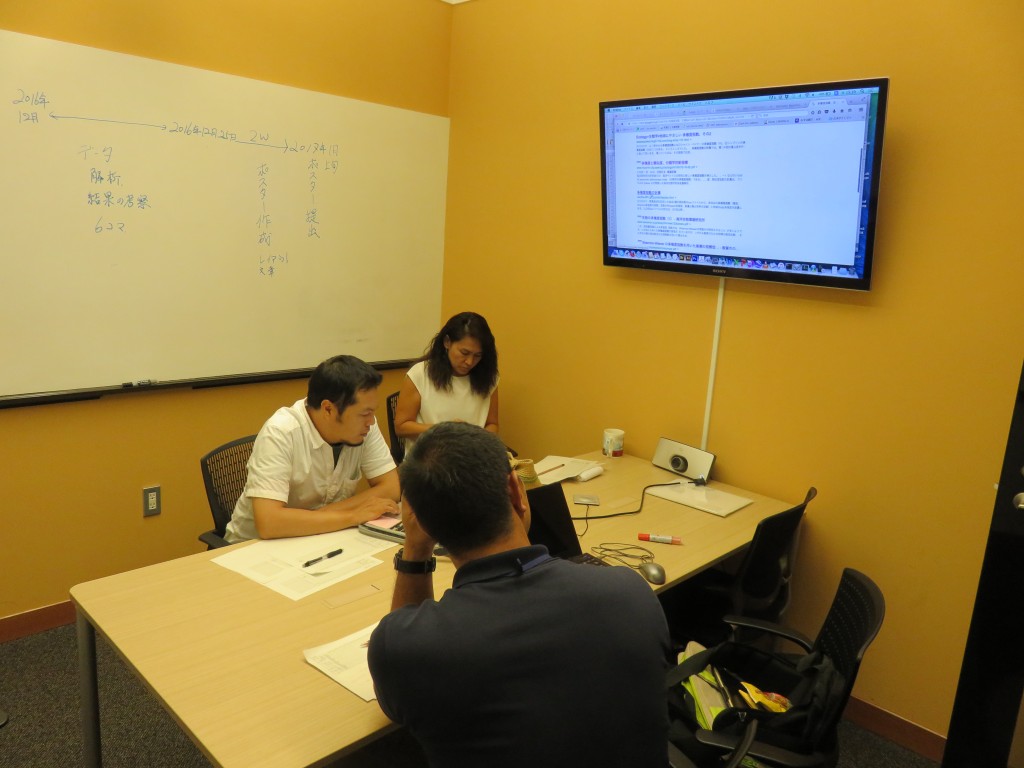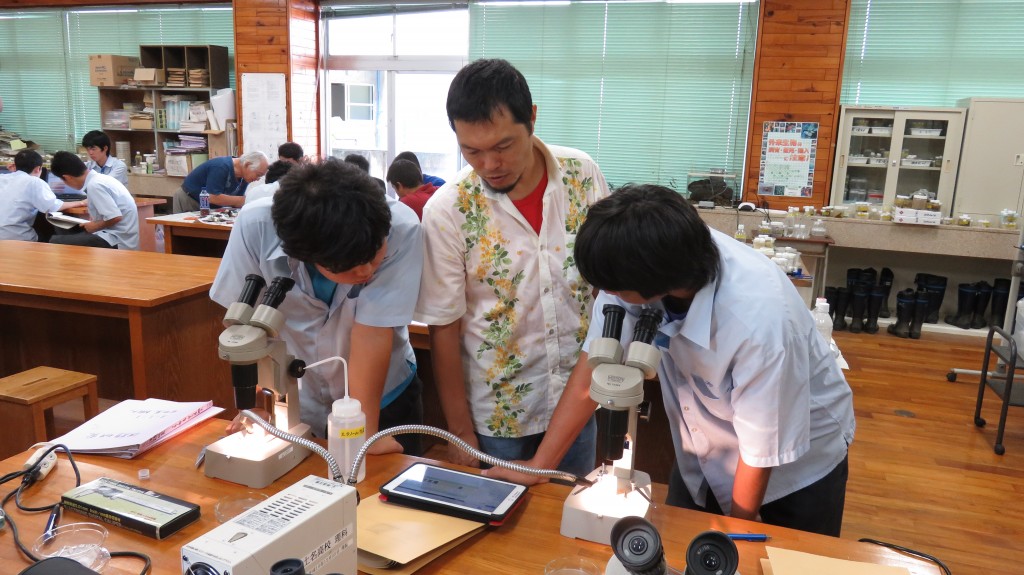Video Producer, Director and Editor: Linda Iha
Script and Starring: Dr. Masashi Yoshimura
Video Production Assistant and Translation: Aina Urano
Video Production Assistant: Masako Ogasawara
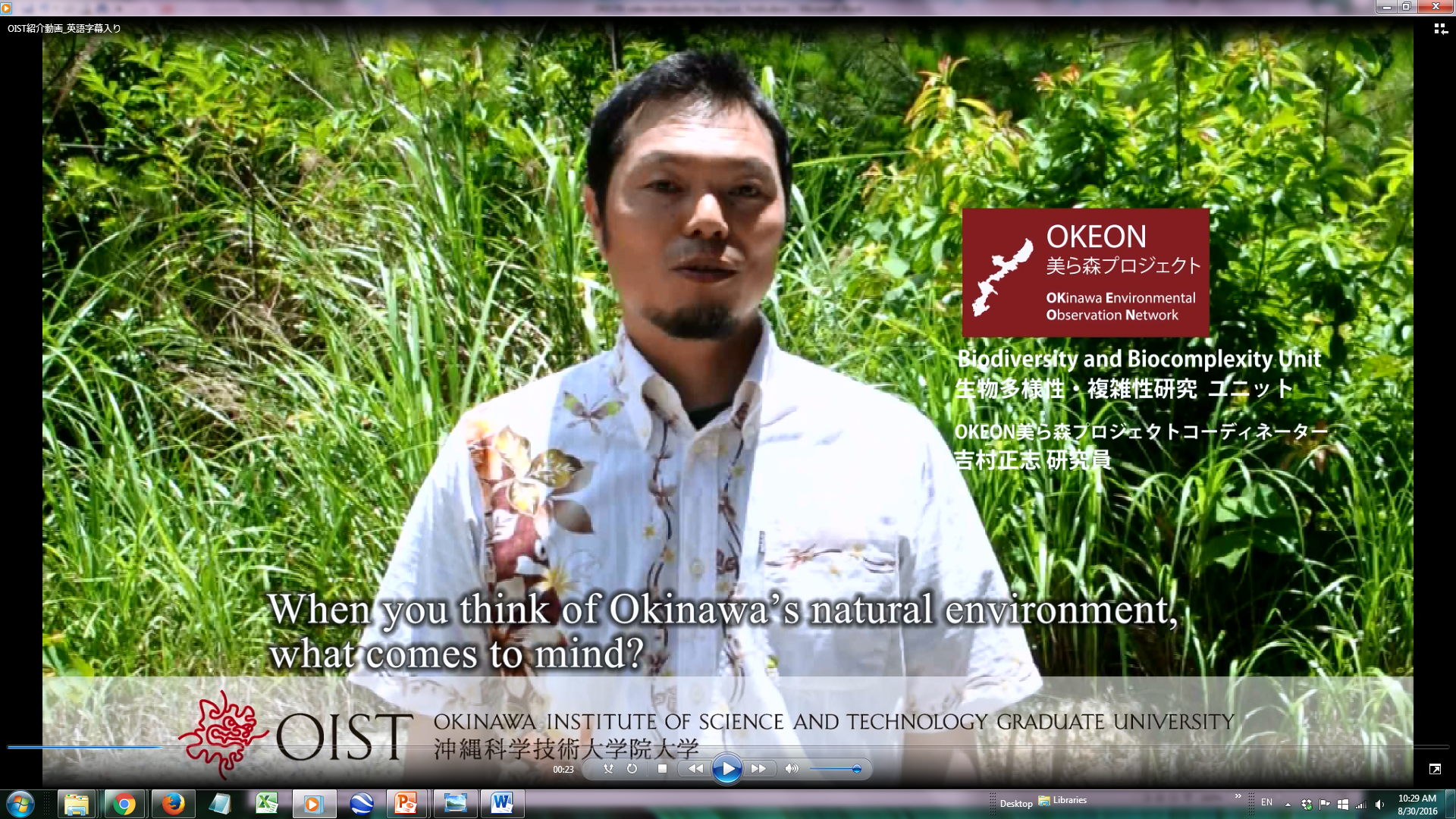
(Click here or on the picture to watch the video)
OKEON Chura-mori Project: what is it? Simply put, it is an environmental monitoring project in Okinawa, Japan, funded by OIST, and conducted through the co-operation of Okinawan local society. From researching the biodiversity in Okinawa to developing social networks and improving environmental education, the goals of the project include multiple aspects. This video will introduce the insect monitoring aspect of the field sampling system.
The primary scientific goal of OKEON is to measure and monitor the terrestrial environments of Okinawa and understand how natural and anthropogenic factors affect the environment over time. One component of this is to use samples of small insects, collected from SLAM traps. On each of the 24 sites across Okinawa, there are also instruments which log weather data, camera traps and acoustic recorders.
There are many activities besides this which are fundamental to OKEON. There is collaboration with museums, high schools and universities across Okinawa. For example, students at Hentona High School collect materials from OKEON sites which can be used for their education and for research at OIST. These students are taught to do so by high school teachers who have attended a training programme at OIST related to ant research. Projects like this which create benefit for everyone involved and have a positive impact on society are very important to OKEON.
We hope you enjoy the website, where we will post the latest information and blogs. Please also visit our Facebook/Twitter page for further updates.
Please see below for the Japanese version of this blogpost.
このブログの日本語バージョンはこちらです。
製作者、監督、編集者:伊波リンダ
脚本、出演:吉村正志
制作アシスタント、翻訳:浦野藍業
制作アシスタント:小笠原昌子
(動画を見るのにこちらをクリックしてください)
OKEON美ら森プロジェクトとはなんでしょうか?OKEON美ら森プロジェクトとは、沖縄科学技術大学院大学の生物多様性・複雑性研究ユニットが牽引する、社会協働型の沖縄環境モニタリングプロジェクトです。その目的は、沖縄の陸域の環境および生物多様性の理解から、実際の環境観測網構築、そして協働ネットワークまでと、多岐にわたります。この動画は本プロジェクトの、昆虫調査部分の概要を紹介します。
OKEON美ら森プロジェクトが研究面において目指すところ。それは、沖縄全域を網羅する陸域自然環境の観測網を立ち上げること。そして、自然の変化や人為的な要因が生物多様性に現在、そして未来にわたり与える影響を理解することです。プロジェクトではまずはじめに、沖縄本島全域24ヶ所の調査区に72基の飛翔性昆虫捕獲器(SLAMトラップ)を設置。そこから集まる小さな昆虫のサンプルに注目して、環境の研究を行っています。その他にも、それら調査区には気象観測装置やカメラトラップ、音声トラップなども設置し、環境データを収集します。
上記研究面の他に、地域社会との連携が、OKEON美ら森プロジェクトの最も大切な部分のひとつです。現在は、沖縄本島にある博物館や高校、大学などと協働関係を構築しています。例えば、高校との協働では、生徒たちが採集した標本を、高校での環境研究実践と、私たちの生物多様性研究で共有します。OKEON美ら森プロジェクトでは、アリ類を使った環境研究の研修を提供。そこへ参加した先生方が、生徒たちの研究指導を行います。 そこに関わるすべての人たちに利益をもたらし、地域社会の未来に貢献すること。OKEON美ら森プロジェクトが、常に大切にしている部分です。
このウエブサイトに最新の情報やブログをアップしますので、ぜひお楽しみください!フェイスブックとツイッターも更新中。ご覧ください。


